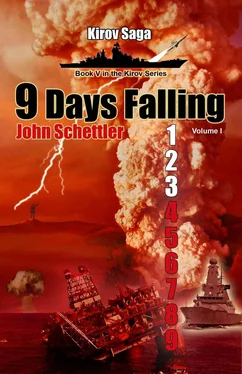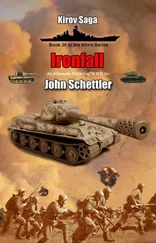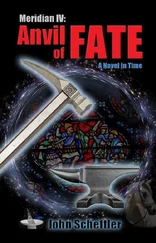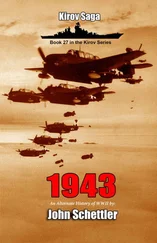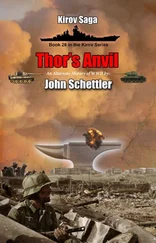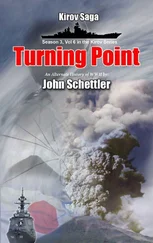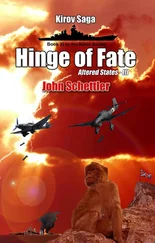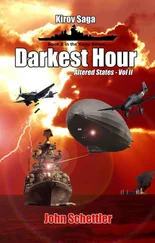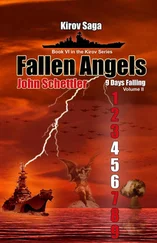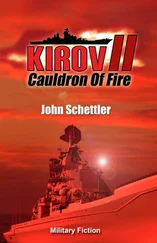Missile defenses there were beefing up on the tiny island outpost as well. The THAAD Terminal High Altitude Area Defense missile batteries were already arriving. Deployed from mobile truck systems like the Patriot, THAAD was designed to find, track, and hit ballistic missiles in their re-entry phase and destroy them by kinetic impact.
As to the satellites, discussion was over in the White House Situation Room. While the US and China had not yet faced off against one another with direct military assets, the Chinese ASAT attacks were deemed hostile acts and it was decided to quickly reply in kind. The US Skybolt system had been resurrected in 2018 as part of the DOD’s Evolved Expendable Launch Vehicle (EELV) Program. The need for redundant ASAT capability had become apparent, and the system now used an air launched version of the SM-3 Anti-Ballistic Missile on US AEGIS capable ships. Late on the second day of the war, the Skybolts were flying to repay China in kind for the pre-emptive strikes on US satellites prior to their attack on Taiwan.
At the same time the US was quick to get new assets in place, and a Delta IV at Vandenberg was launched to put another GPS satellite into mid-level orbit at 20,350 kilometers. The Pentagon had already decided they would take immediate steps to prevent any further attacks on its satellites by China, and the B-2s mustered at Anderson would soon be airborne with a little surprise for the Chinese.
Tech Sergeant Jason Banks was up early that day, out of the HC-5 barracks and through the line in the chow hall to hit the tarmac by 05:00 hours. The base was on full wartime footing and the activity had been frenetic the last 48 hours. Yet all the many years of drills and practice exercises paid off, and the whole operation was running smoothly, under the watchful eyes of Master Sergeants from one end of the airfield to another. The Captains and Lieutenants might be flying the planes, but down on the ground things got done on the E level pay grades, and done with precision and skilled expertise that was par for the course.
Banks met up with his special work detail, an E-4 Senior Airman and a couple grease monkeys and bomb bay brats on loadout operations. The B-2 was an awesome plane, its silhouette so striking and unusual when viewed from certain angles that it had often been reported as a UFO. The ordnance trucks had just pulled into the hanger and the special delivery had arrived.
Airman Thomas Knox was the first man on the job, detailed to unload and prep the missiles prior to final mounting. “Holy shit, will you look at those baby’s” he said as Banks watched the first missile on the hoist, hands on his hips, a toothpick still in his mouth from breakfast. “It looks like a god-damned shark! How fast you figure this thing is, Sarge?”
“Fast enough, Tommy Knockers, just watch that hoist and run your hydraulics.”
“Hell this thing looks mean. No wings or tail, Sarge. How does the damn thing fly?”
“That’s classified, Knox. All you need to know is that you load a pair and get it done by zero-six flat, kapish?”
It was mean, and it was also very, very fast. The weapon was called the X-51C, a hypersonic stealthy cruise missile developed by Boeing that was dubbed the WaveRider because it rode its own shockwave for lift, and therefore did not need wings. Originally tested on the older B-52s and designed as a technology demonstrator, the weapon was moved into production in 2018 and a limited inventory was available for this special strike mission. The marriage of a fast, stealthy cruise missile with the B-2 was inevitable, as the B-2s could carry two of the X-51s and, given their proven ability to penetrate hostile airspace undetected, the new weapon’s effectiveness was practically guaranteed.
With a range of 740 kilometers, the X-51 was propelled by an MGM-140 ATACMS solid rocket booster to achieve an initial speed of Mach 4.5 after launch. This first stage would be ejected and then the second stage would ignite a Pratt & Whitney Rocketdyne SJY61 scramjet that moved the shark-nosed cruise missile to Mach 6.0 and beyond. The first targets assigned to the B-2s would be the Taiyuan Satellite Launch Center and the Guangde Rocket launch site west of Shanghai, respectively known as Base 25 and Base 603. These targets were within 500 kilometers of the coast and could be struck by B-2s over the South or East China Seas.
The Xichang Satellite Launch Center, or Base 27, which handled most of China’s GPS satellite launches, was a tougher nut to crack, as it was more than 1000 kilometers inland. The B-2s would be required to penetrate and overfly the Chinese mainland before launching their missiles. An alternate route was devised for the bombers to quickly cross the narrow neck of Vietnam, then turn north over Laos and approach the base from the south. Once the missiles were launched and airborne, they were virtually unstoppable.
“My, my,” Knox went on chattering. “Look what momma’s bringing home to Texas.” Sergeant Banks and his detail were working on bomber AV-7, the Spirit of Texas , in active service in the B-2 fleet since 1994. The “Spirits” were all lined up in the hangers that morning, Missouri, California, South Carolina, Washington and Kansas, Banks home state. They were all assigned to the famous 13th Bomb Squadron of the 509th Operations Group out of Whiteman AFB, Missouri. Formed in 1917, the Squadron had been hit on the ground at Port Moresby by the Japanese in the second World War, and lost all their B-25s. They were reconstituted with A-20 Havocs and raised hell for the duration of the war. Over the years they flew the A-26 Invaders in the Korean War, and a thousand sorties in Vietnam with the B-57 Canberra. Years later they moved on to the B-1B Lancers and now they were flying something quite different than the old B-25s from WWII.
“I never will get used to these things,” said Knox as he looked at the B-2. They don’t even look like a plane. Hey Sarge,” Knox grinned at his Tech Sergeant. “Why in hell would anyone want to name a something like this Spirit of Kansas?”
“Load the weapons, Knox, not the bullshit. You come on down to Topeka sometime and I’ll show you some good food and good bars to go with it.”
“They let you drink in Kansas? I thought all you guys did down there was smoke that damn blue grass until you were blue in the face.”
“You’re gonna be blue in the face if you don’t wire that jaw shut, Knoxwurst. I’m going down the line to check on Harley’s group. When I get back here that first missile better be in the bay and ready to rumble.”
“Don’t worry, Sarge. I’ll have ‘em both up and ready in no time.” Knox waved at another Airman and maneuvered the ordnance cart under the planes enormous wing, heading for the central bomb bay under the plane’s fat fuselage. “Look out, Watson! Here comes the doom buggy. Outta my way.”
Banks shook his head and started down the line. Doom indeed he thought, wondering what was in the warheads on these sleek new cruise missiles. He had heard a little about them and knew they were fast as greased lightning, with a heavy wallop. Chinese asked for it, he thought. So we’ll serve dinner tonight—take out. They won’t even see the damn planes coming, let alone the missiles.
The distant wail of an alert siren cut through the pre-dawn stillness, its shrill warning suddenly sending a shiver up the Sergeant’s back. You didn’t hear that all too often out here, unless the weather was real bad and there was a high wind warning up. Something about it chilled him, even in the humid, languid airs of the base. He listened intently, suddenly realizing what the siren meant.
“Christ almighty!” he said aloud, stopping and looking back over his shoulder at Knox and the rest of the crew. “On the double, gentlemen—we’ve got incoming!”
Читать дальше
